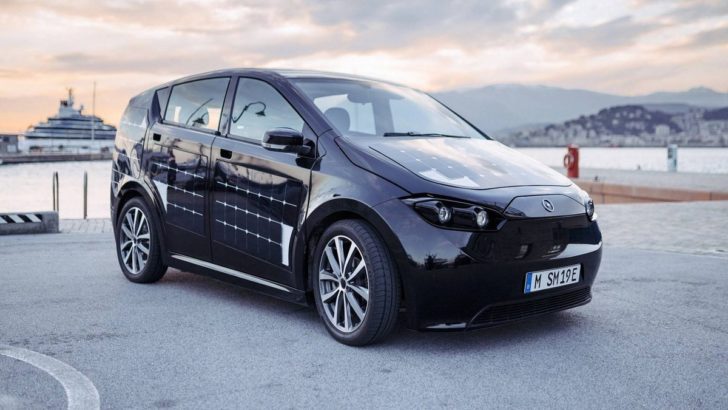For drivers of electric cars, a great fear is that they will run out of battery power far from a charging station. The Sono Sion offers self-powering thanks to solar energy.
Solar panels integrated into the electric vehicle
While some have suggested that installing solar panels on the roofs of cars would be a way to increase battery life, the German company Sono Motors has gone one step further: it presents a car entirely covered with panels, which, according to the company, allows the vehicle to power itself beyond the average daily commute.

Known under the name of Sion, it will be « the first production vehicle integrating solar energy to be marketed », at a cost of around 25,500 euros. « The solar panels blend perfectly with the surface of the vehicle and can generate up to 34 kilometres of additional range per day at maximum performance, » the company said in a press release. « This is far greater than the average distance travelled by commuters in Germany of 17 kilometres to their workplace ».
An application for sharing energy
Designed and produced in Munich, the prototype of the Sion 2017 has been lengthened and enlarged, now offering a more spacious interior and compatibility with carpooling applications, making it ideal for environmentally friendly carpooling services.

An application allows people to share the vehicle, journeys and energy, thanks to a bidirectional recharging function, as shown above. Sono Motors plans to develop more vehicles based on the Sion base, for example in the fields of urban mobility, professional transport and for « last mile » journeys, such as postal delivery vehicles that only carry a product over a short distance.
Community participation
As part of a fun community engineering experience, Sono Motors involves those who pre-ordered a Sion in selecting certain vehicle details through community votes. This type of participation, the company says, is new to the « vehicle development field ».

Carbon emissions that cannot be avoided or reduced during the production and manufacture of the vehicle are fully offset. And while the car, which is due to hit the roads in early 2022, may not be optimal for a transcontinental tour of Europe, future short-distance users will soon be able to drive a car that will have the least impact on the planet.
